From puffins to arctic terns, Iceland is a haven for birds with almost 350 species calling the island home for at least a few months of the year. Here’s how to see Iceland’s birds around the country!
Iceland’s Most Iconic Birds
Puffins, gyrfalcons, and whooper swans, oh my! Here’s a rundown of Iceland’s most iconic bird species that you’ll want to see on your trip to the Land of Fire and Ice.
The Atlantic Puffin: Iceland’s Beloved Seabird
The Atlantic puffin is the most popular and beloved of all Iceland’s birds. This cliff-dwelling, colorful bird migrates to Iceland starting at the end of April, spending their summers along Iceland’s shores. They dive back into the sea, leaving the country altogether by September and spending half the year literally living in the ocean.
Puffins migrate to Iceland’s shores to breed and wait for their chicks to hatch, all of which takes place on craggy cliff sides and rocky islands around the country.
Some of the best places to see puffins in Iceland include Latrabjarg, Dyrholaey, the Westman Islands, and Breiðafjordur. Both the Westman Islands (also known as Vestmannaeyjar) and Breiðafjordur will require a ferry to see them, while it’s possible to drive out to Latrabjarg and Dyrholaey.
It’s a good idea to rent a 4×4 vehicle for puffin spotting, as some of the best locations are down dirt roads. Otherwise, you can easily get around Iceland with a standard vehicle in the summer months!
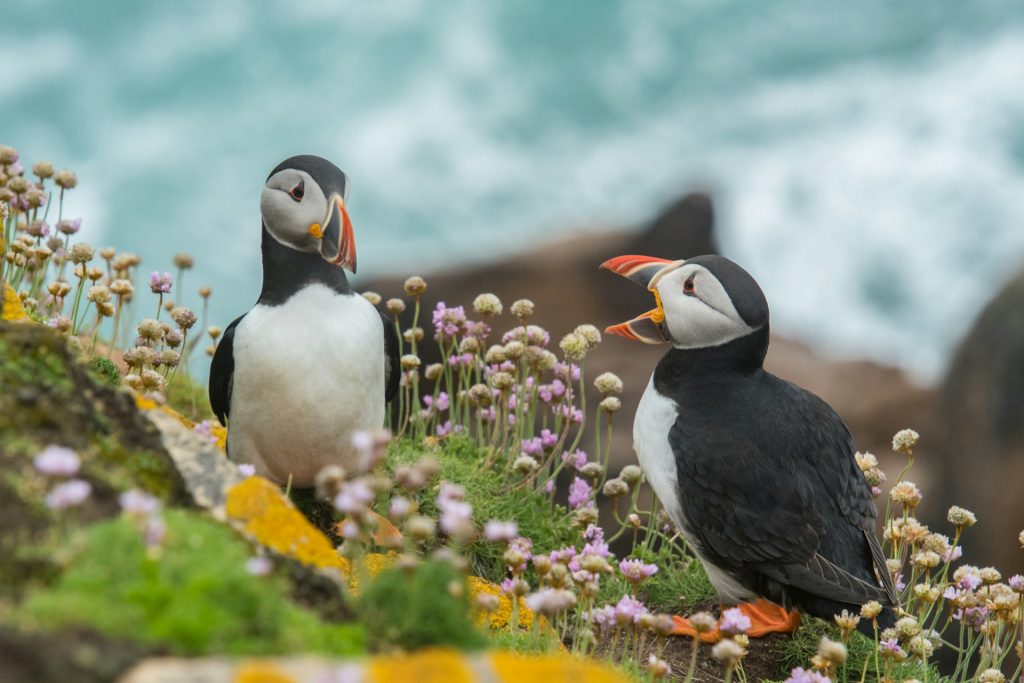
The Gyrfalcon: Iceland’s National Bird
The national bird of Iceland, gyrfalcons are majestic birds and known for their powerful flight and hunting prowess, as you would expect from a member of the falcon family! Gyrfalcons also happen to be the largest species of falcon in the world.
Native to Iceland, it’s possible to see gyrfalcons anywhere in the country but more common near Lake Myvatn, Thingvellir National Park, and the Snæfellsnes Peninsula. All of these locations are easily accessed with a standard rental car in the summer months. If you’re trying to spot gyrfalcons in the winter, a more rare sighting, you’ll most likely want to rent a 4×4 vehicle.
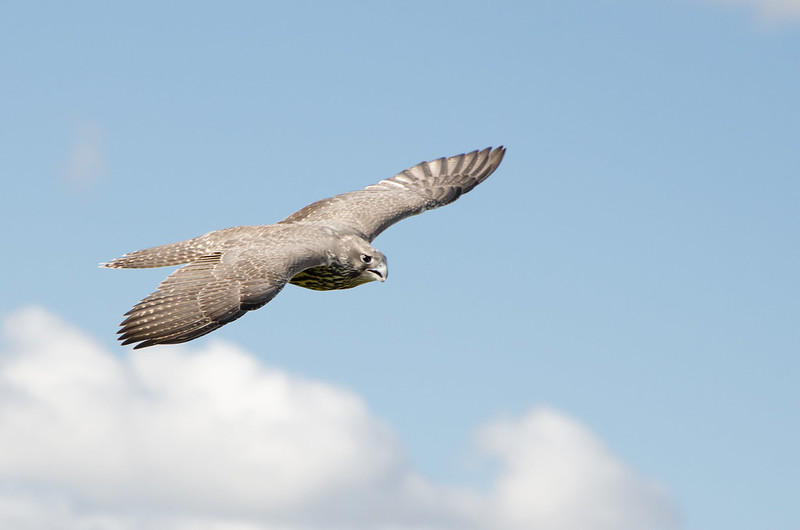
The Ravens: Iceland’s Mythical Birds
Ravens are not just a common sight in Iceland; they hold a special place in Icelandic folklore and culture. Known locally as Huginn and Muninn, after Odin’s legendary ravens in Norse mythology, these intelligent birds are celebrated for their cunning and adaptability. Throughout Iceland, ravens are often associated with mystery and wisdom, embodying qualities that make them a beloved part of the landscape.
In Iceland’s rugged terrain, you’ll often see ravens circling above cliffs and volcanic crags, their harsh calls echoing in the open air. Unlike other birds, they are active year-round, resilient to Iceland’s harsh winters, and easy to spot throughout the country.
Huginn and Muninn, as they are affectionately called, remind locals of the strong link between nature and Icelandic legend, making a raven sighting feel like a brush with Iceland’s ancient folklore. Whether you’re exploring the Snæfellsnes Peninsula or wandering through remote highland regions, keep an eye out for these fascinating birds.
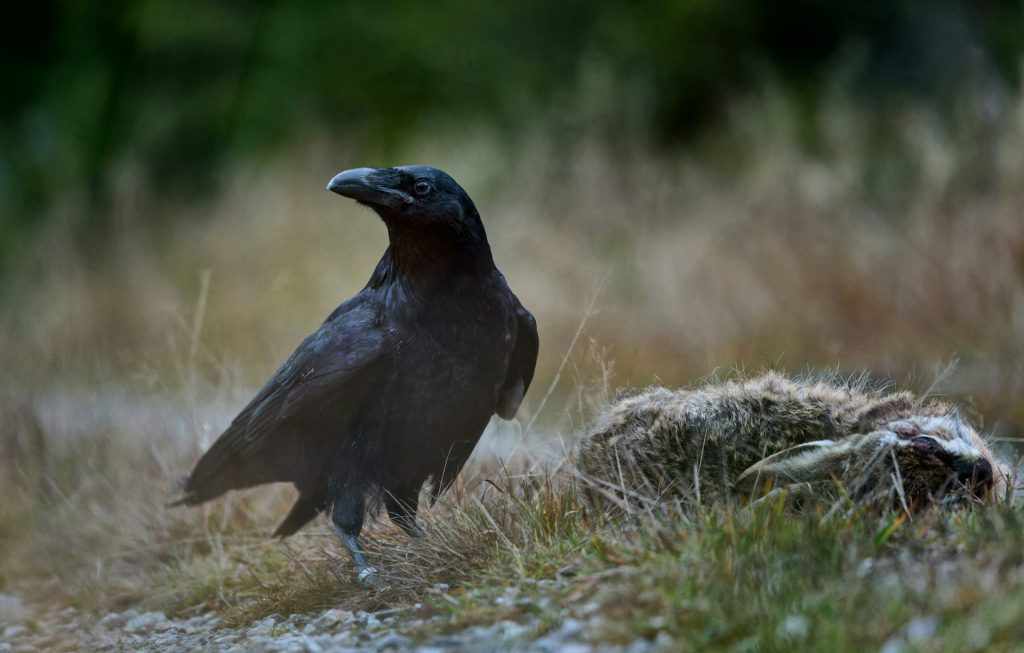
Other Notable Bird Species in Iceland
Iceland is a country with a diverse and dense bird population. A few of the other notable bird species in Iceland include arctic terns, common eider, whooper swans, rock ptarmigans, white-tailed eagles, snowy owls, and golden plover.
Because Iceland is a more remote destination with plenty of rugged terrain that humans don’t venture to, birds congregate here to nest and breed.
Located right on the Ring Road, Lake Myvatn is one of the best places in Iceland to spot multiple bird species at once.
Birdwatching Hotspots in Iceland
If you’re planning a trip around birdwatching in Iceland, these are some of the best places to mark on your map.
Látrabjarg: Europe’s Largest Bird Cliff
The largest seabird cliffs in all of Europe, Látrabjarg, is hands down the best place for birdwatching in Iceland. Known for its dramatic cliffs in the Westfjords, this remote location near the westernmost point of Europe towers almost 1,500 feet above the sea. It’s a remarkable breeding ground and home to one of Iceland’s largest puffin colonies, attracting thousands of seabirds each summer.
During the warmer months, Látrabjarg’s cliffs become a bustling breeding ground for various seabird species. Puffins, razorbills, gannets, and guillemots nest here in great numbers, creating a spectacular view for bird enthusiasts. However, reaching Látrabjarg can be an adventure in itself. The Westfjords are one of Iceland’s most remote and rugged regions, making the journey a bit more challenging than other destinations.
From Reykjavik, it takes about six hours by car, starting with Route 1 (Ring Road) north out of the city before switching to Route 60. In the tiny town of Flókalundur, you’ll turn left onto Route 62 and eventually Route 612, which leads you right to these awe-inspiring cliffs.
Do note that this route is accessible only in the summer, as these roads are closed during the winter months due to snow. For those who make the journey, though, the reward is an unforgettable birdwatching experience with endless views of puffin colonies and seabirds along these breathtaking cliffs in the Westfjords.
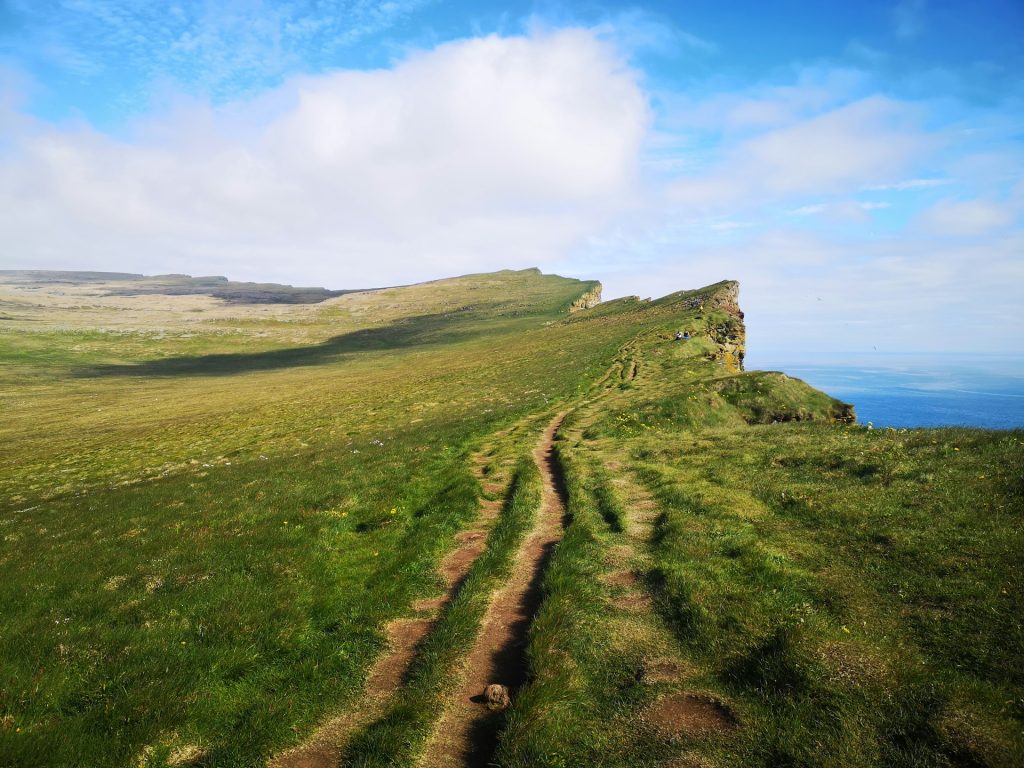
Lake Mývatn: A Birdwatcher’s Paradise
Lake Mývatn is another of Iceland’s absolute best birdwatching destinations. Tucked in Northern Iceland, this volcanic lake is a striking shade of blue and set against snow-capped peaks. The surrounding wetlands and shores of the lake provide the perfect habitat for bird species like whooper swans, gyrfalcons, harlequin ducks (and several more duck species), and arctic terns, among dozens of others.
The Snæfellsnes Peninsula: Diverse Birdlife in Stunning Landscapes
The Snæfellsnes Peninsula is another great spot for birdwatching in Iceland—including puffins! This region is more easily accessed than Latrabjarg, even in the winter months.
Just some of the birds you’ll see along the peninsulas shores include puffins, fulls, razorbacks, gyrfalcons, white-tailed eagles, golden plover, arctic terns, ravens, ptarmigans, and Eurasian wigeons, among many other species!
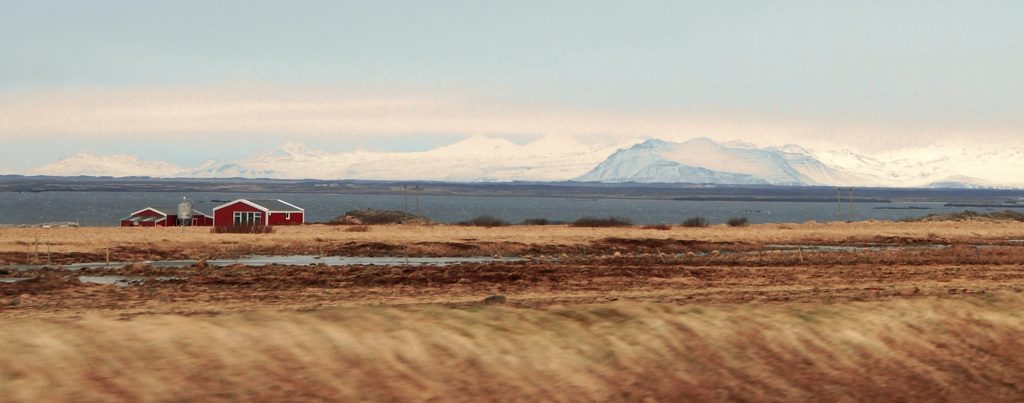
Self-Guided Birdwatching: The Freedom of a Rental Car
If you’re making a dedicated trip to Iceland for birdwatching, renting a car is undoubtedly the best way to get around. Having your own set of wheels allows for a flexible schedule, whether you’re spotting puffins along the coast or deciding to head out to a new location on a whim.
Iceland’s landscape is full of hidden birdwatching gems, and with a rental car, you can explore lesser-known places and make spontaneous stops when you see a gyrfalcon swooping overhead or catch a glimpse of a rare seabird colony.
For those interested in a more structured experience, joining a puffin tour can be a fantastic option. Available only during the summer birdwatching season, these tours take you out to sea where you can view puffins in their natural habitat up close.
Some of the best puffin tours depart from locations like Reykjavik or the charming village of Stykkishólmur, providing a unique chance to observe these beloved birds from the water rather than from the cliffs alone. It’s an ideal option if you’re hoping for a more immersive experience, with expert guides who know exactly where to look for the largest puffin colonies.
Whether you’re on a self-guided adventure or joining a puffin tour, remember that spotting puffins is best done between May and August, when they are nesting along Iceland’s coasts. With a rental car, you can create a mix of self-driven excursions and guided tours, making the most of Iceland’s incredible birdwatching opportunities throughout the summer months.
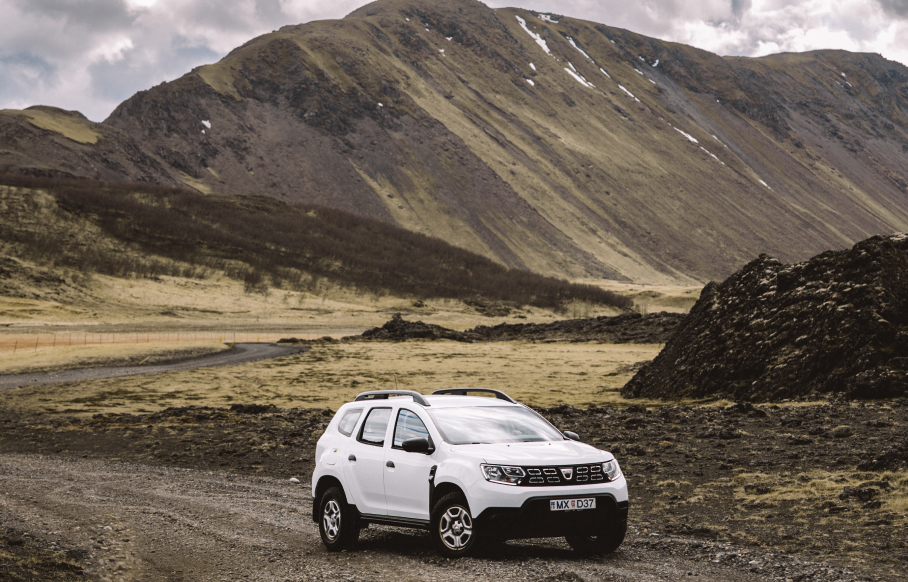

Practical Tips for Birdwatching in Iceland: Best Times and Seasons for Birdwatching
The best time of year for bird watching in Iceland is summer, when almost all of the country’s bird species are present. By late May, all of the summering birds have arrived and won’t start to migrate away until September.
Those who rent a car for birdwatching will be well rewarded as it provides the ability to follow bird migrations across the different regions of Iceland. Some bird species head to their wintering sites in South Iceland in the colder months!
Essential Birdwatching Gear and Safety Tips
Some of the essential birdwatching gear you should bring on your trip to Iceland include:
- Binoculars
- Field guides
- Gloves
- Warm hat
- Sunglasses
- Waterproof jacket
- Wool socks
- Thick coat
- Sweater
- Thermal underlayer
- Waterproof boots
- A good waterproof backpack is also useful
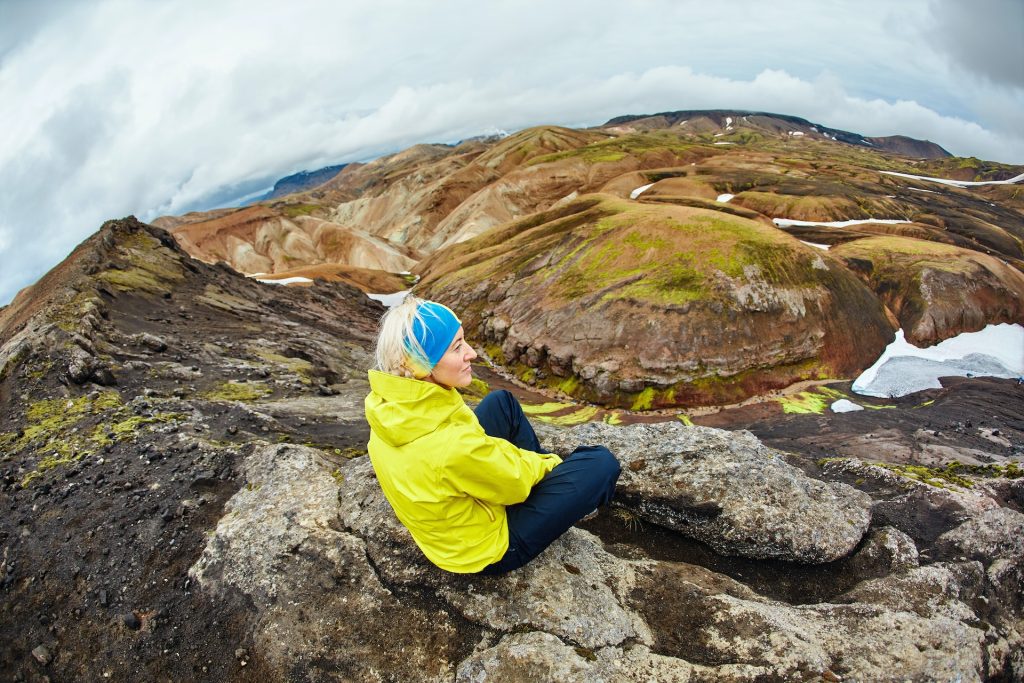
There are also a few safety tips to follow when bird watching in Iceland.
- Be extremely mindful of cliff ledges and your footing around drop offs. There are no safety rails along Iceland’s cliffs and, despite your excitement at seeing puffins, you’ll need to stand a safe distance back. Many of Iceland’s seaside cliffs can also have high winds!
- Always respect bird habitats. Stay back a minimum distance of 75’ and avoid disturbing them, especially in nesting grounds.
- Never leave the designated trail as many of Iceland’s ecosystems are extremely fragile.
- If you’re birdwatching near the ocean, watch for sneaker waves in some destinations like Dyrholaey as they’ve been known to wash unsuspecting travelers into the sea.
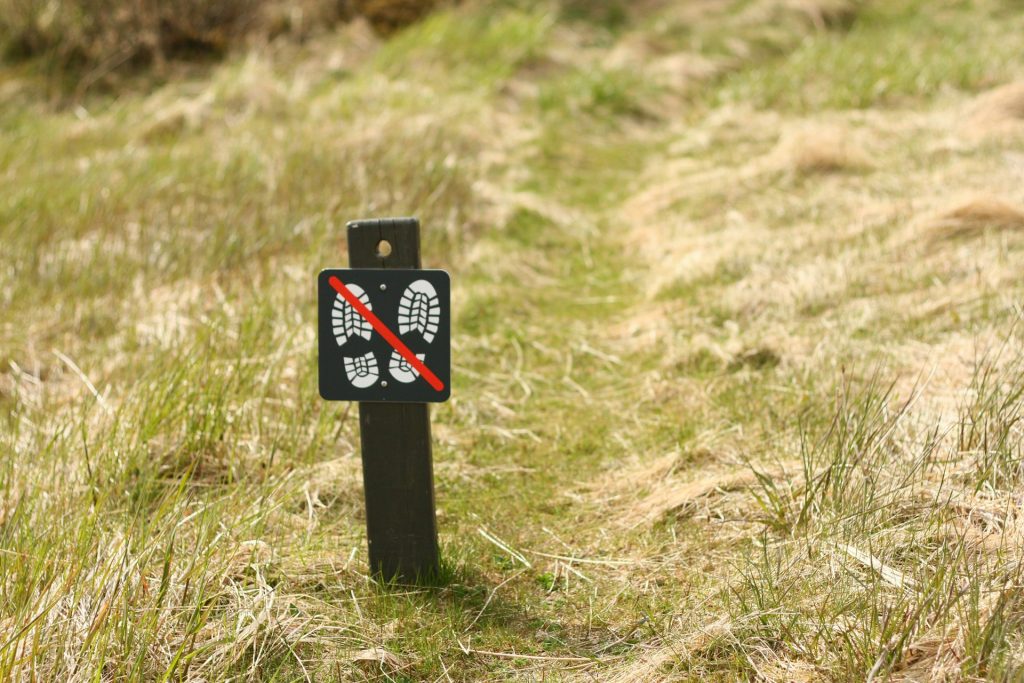
Conclusion
As you can see, birdwatching in Iceland is some of the best in the world! Start planning your trip to see the puffins now by booking your rental car with Firefly Iceland Car Rentals.
Our reliable fleet of vehicles will easily get you to bird watching destinations around the country, like Lake Myvatn and the Latrabjarg cliffs. Be sure to ask our staff where they recommend birdwatching when you pick up your car!





